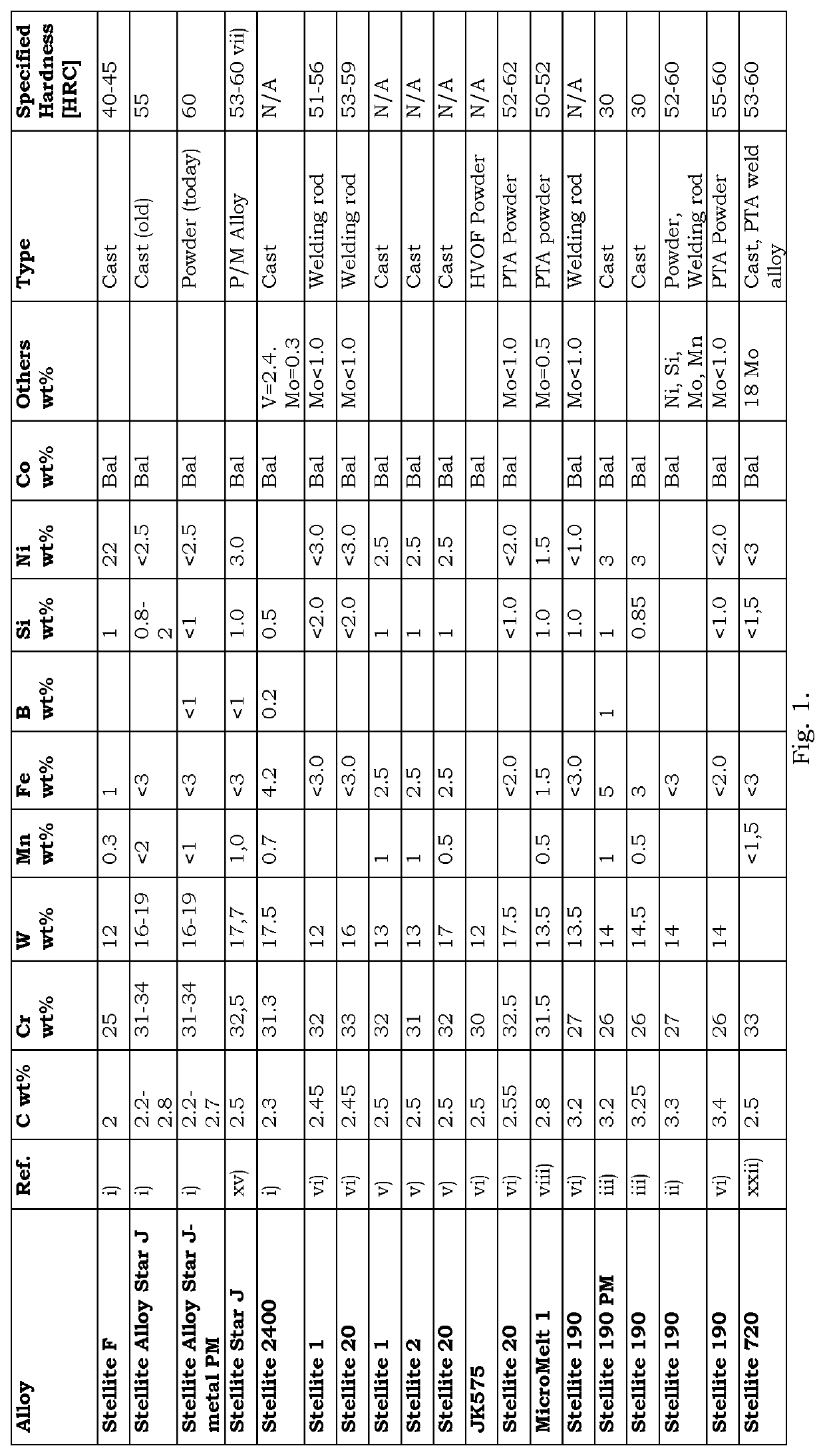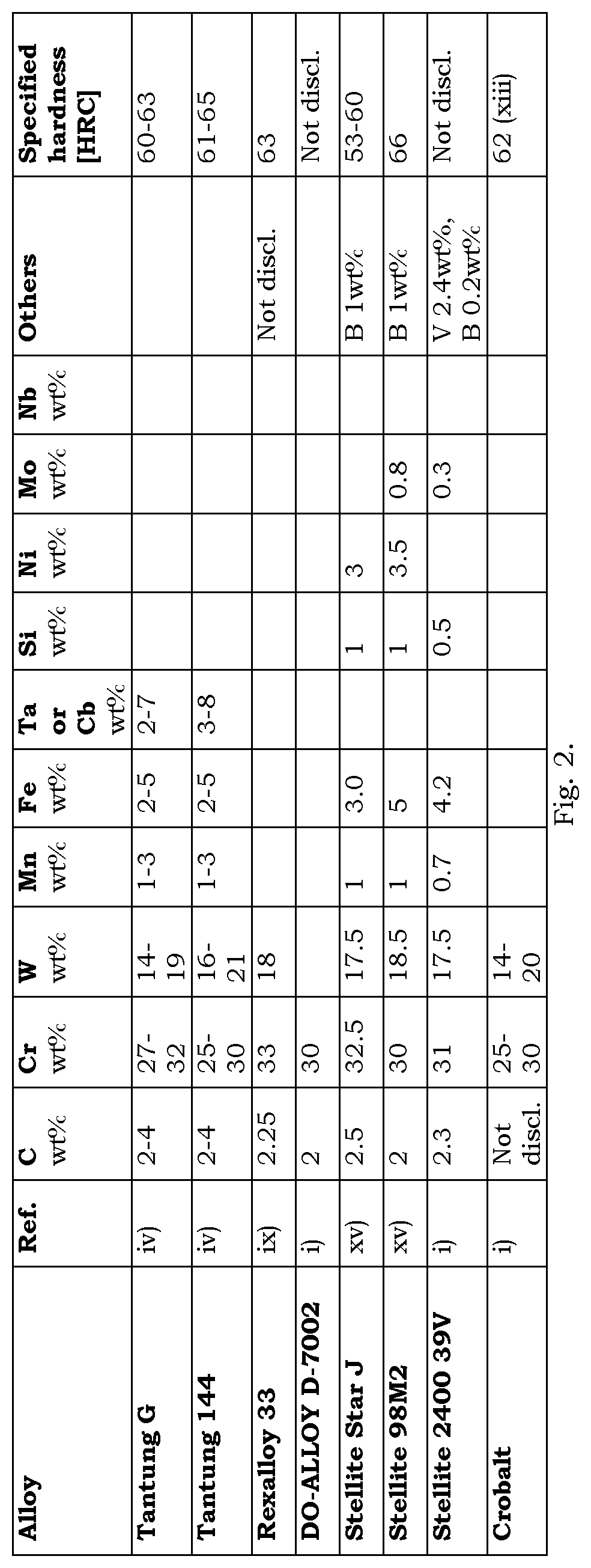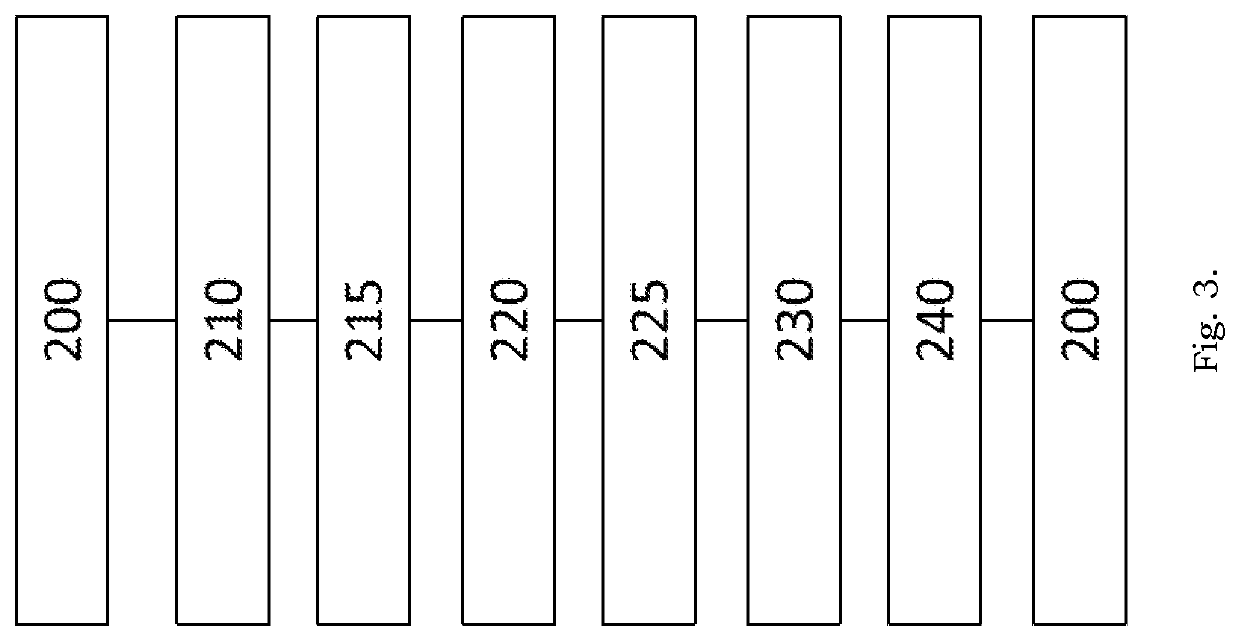High carbon content cobalt-based alloy
- Summary
- Abstract
- Description
- Claims
- Application Information
AI Technical Summary
Benefits of technology
Problems solved by technology
Method used
Image
Examples
example 1
[0163]Prior Art Market Study
[0164]In order to determine the alloying content and microstructure of the group of conventional, commercially-available cast high carbon cobalt chromium alloys, a market analysis was performed, wherein the composition and microstructure of a number of real material pieces were analyzed, see FIG. 5.
[0165]Note that the Tantung analysis specification shown in FIG. 2 is extremely wide—two alloys with 2 wt % and 4 wt % C are extremely different in nearly every mechanical property. This is assumed to be a result of traditional casting techniques, where the content is not able to be controlled very accurately and therefore the properties of all alloy combinations in this wide specification are unknown. In addition, as will be shown here, in no case is the C content as high as the maximum amount specified in FIG. 2.
[0166]An important result, seen in FIG. 5. is that the actual carbon content in these types of cast alloys is generally 2.45 wt % or lower. This is a...
example 2
[0188]Two types of alloys were 3D printed according to the present method.
[0189]MicroMelt1 (MM1), existing PTA grade from Carpenter having the composition of:
CCrWNiMoFeSiMnCo2.831.513.51.50.51.51.00.5rest
[0190]Composition of an alloy according to the present invention with the composition of:
CCrWNiMoFeSiMnCo3.9520.621.20.7rest
[0191]The samples were tested and analyzed regarding hardness and micro structure.
[0192]On the Micro Melt 1-alloy after 3D-printing, the hardness was measured to 835 HV2 kg, which is about 65 HRC. In the specification from Carpenter*, a typical deposited hardness of the same alloy is 50-52 HRC. *=Plasma Transferred Arc (PTA) and Laser Overlay powder specification, Carpenter Powder Products, 07-12 1K T35E.
[0193]However, in the Micro Melt 1-alloy after 3D-printing, the microstructure still has a problem with Cr-carbides, forming longer sharp stringers / rods, which is locally increasing the stresses and therefore reducing the toughness in the materials. See FIGS. 2...
example 3
[0199]The 3D printed product obtained in Example 2 with an alloy according to the present invention was tested in a long term heating test where the product was heated during an extended period of time and then the mechanical properties were tested.
[0200]The test was done by placing the product in an oven at 650° C. for 168 h, i.e. 7 whole days. This corresponds to a use time for a cutting tool of 75 seconds per gear when producing 800 gears, i.e. 6000 seconds (16.67 h). If the cutting tool is resharped ten times it will be 166.7 h.
[0201]The hardness of the product was 870 HV2 kg (around 66HRC) after HIP. After the long term heating test it was 866 HV2 Kg (around 66HRC). In other words, the hardness of the material is maintained even after long term use.
[0202]The same was seen for the melt trial alloy 6. After HIP it was 900 HV2 kg (around 67HRC) and after the long term heating test it was 870 HV2 kg (around 66HRC).
PUM
| Property | Measurement | Unit |
|---|---|---|
| Temperature | aaaaa | aaaaa |
| Temperature | aaaaa | aaaaa |
| Temperature | aaaaa | aaaaa |
Abstract
Description
Claims
Application Information
 Login to View More
Login to View More - R&D
- Intellectual Property
- Life Sciences
- Materials
- Tech Scout
- Unparalleled Data Quality
- Higher Quality Content
- 60% Fewer Hallucinations
Browse by: Latest US Patents, China's latest patents, Technical Efficacy Thesaurus, Application Domain, Technology Topic, Popular Technical Reports.
© 2025 PatSnap. All rights reserved.Legal|Privacy policy|Modern Slavery Act Transparency Statement|Sitemap|About US| Contact US: help@patsnap.com



